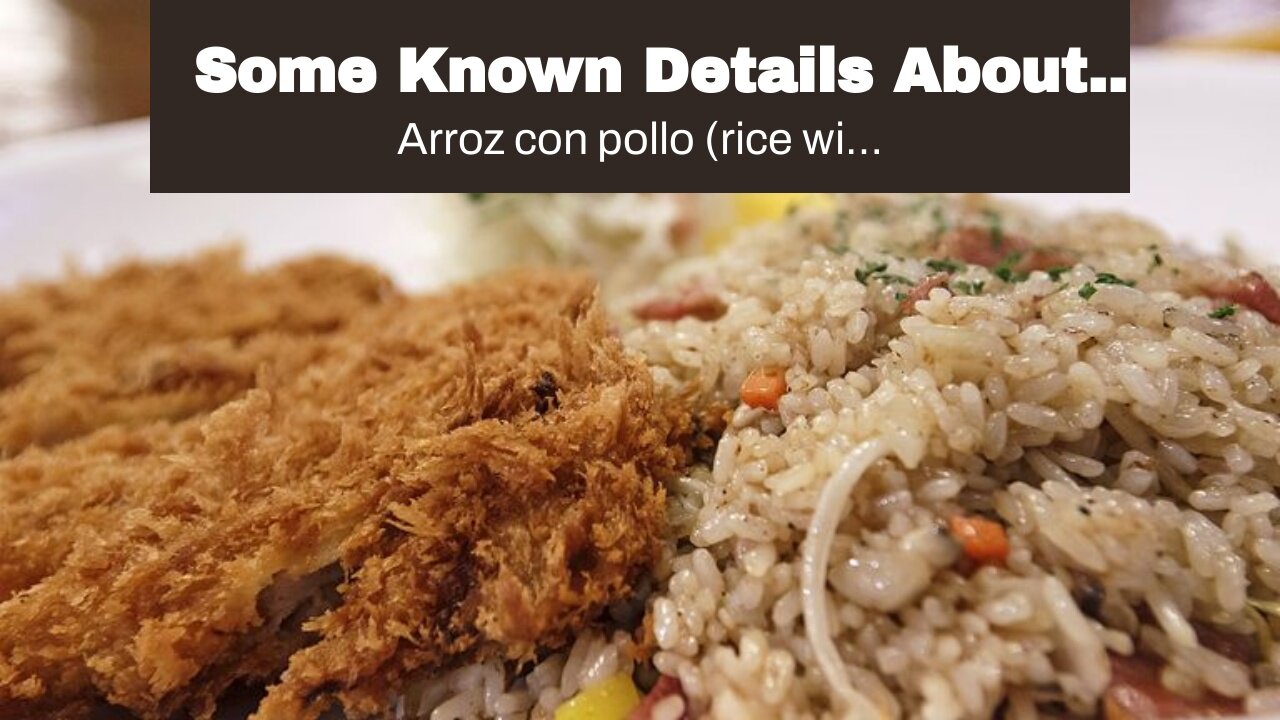Premium Only Content

Some Known Details About The Cuban - Authentic Cuban Cuisine
Cuban cuisineArroz con pollo (rice with chicken) Cuban food is a blend of African, Spanish, and other Caribbean foods. Some Cuban dishes share spices and strategies with Spanish and African cooking, with some Caribbean influence in spice and taste. This results in a mix of the several different cultural influences. A little but noteworthy Chinese impact can also be represented, generally in the Havana location.
During colonial times, Cuba was an essential port for trade, and many Spaniards who lived there brought their culinary customs with them. Summary [modify] As an outcome of the colonization of Cuba by Spain, among the primary influences on the food is from Spain. Other cooking impacts consist of Africa, from the Africans who were brought to Cuba as servants, and French, from the French colonists who concerned Cuba from Haiti.
Another contributing factor to Cuban food is that Cuba is in a tropical environment, which produces fruits and root veggies that are utilized in Cuban meals and meals. A normal meal consists of rice and beans, prepared together or apart. When prepared together the dish is called "congri" or "Moros" or "Moros y Cristianos" (black beans and rice).
Cuban sandwich [edit] A Cuban sandwich (in some cases called a mixto, especially in Cuba) is a popular lunch product that grew out of the once-open circulation of cigar workers in between Cuba and Florida (particularly Secret West and the Ybor City community of Tampa) in the late 19th century and has given that spread out to other Cuban American communities.
In Tampa, Genoa salami is typically layered in with the other meats, most likely due to affect of Italian immigrants who lived side-by-side with Cubans and Spaniards in Ybor City. Tomatoes and lettuce are readily available additions in numerous dining establishments, but these are considered by traditionalists as an unacceptable Americanization of the sandwich.
-
 LIVE
LIVE
Nerdrotic
3 hours ago $10.35 earnedSUPERMAN Drops, Disney Cuts WOKENESS? Hollywood DEI is DEAD | Friday Night Tights 333 Little Platoon
6,537 watching -
 LIVE
LIVE
The Jimmy Dore Show
3 hours agoNYPD’s Mangione Perp Walk an EPIC FAIL! Biden’s Last SCREW JOB to Workers! w/Carol Roth & Paul Stone
15,098 watching -
 LIVE
LIVE
Dr Disrespect
7 hours ago🔴LIVE - DR DISRESPECT - MARVEL RIVALS - I AM GROOT
3,398 watching -
 LIVE
LIVE
Mally_Mouse
2 hours agoLet's Play!! -- Friends Friday!
463 watching -
 LIVE
LIVE
LFA TV
22 hours agoObama’s Fake World Comes Crashing Down | Trumpet Daily 12.20.24 7PM EST
542 watching -
 LIVE
LIVE
2 MIKES LIVE
1 hour ago2 MIKES LIVE #158 Government Shutdown Looms and Games!
318 watching -
 LIVE
LIVE
The Big Mig™
5 hours agoVeteran, Patriot, Leader, Author Allen West joins The Big Mig Show
2,058 watching -
 DVR
DVR
The Amber May Show
22 hours agoBloated CR Failed | What Did The View Say Now? | Who Kept Their Job At ABC| Isaac Hayes
1.09K -
 59:29
59:29
State of the Second Podcast
4 days agoAre We Losing the Fight for Gun Rights? (ft. XTech)
6.03K3 -
 1:00:10
1:00:10
The Nima Yamini Show
3 hours agoTragedy in Germany 🇩🇪 Suspected Terror Attack at Christmas Market – LIVE Updates from Germany
15K22